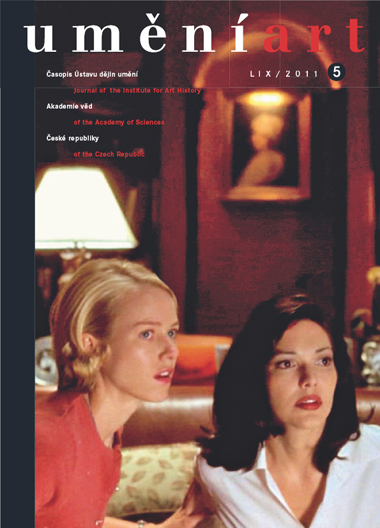Martin Mádl
Giuseppe Bragalli and Bolognese Ceiling Painting in the Czech Lands in the 17th Century
The Bolognese painter Giuseppe Bragalli plied his trade in Moravia and Bohemia in the 1670s and perhaps in the 1680s. So far little is known about his activities before he came to the Czech lands. However, it is likely that he was actively involved in the decoration of the château of the Elector Palatine, Karl I Ludwig, in Heidelberg in 1671, and in the preparation of the ephemeral architecture that was constructed on the occasion of the marriage of the Elector's son Karl II to the Danish princess Wilhelmine Ernestine. A year later, on the recommendation of Count Alberto Caprara and through the mediation of the agent Alfonso Zeffiri, Bragalli entered the service of the Prince-Bishop of Olomouc, Karl II von Liechtenstein-Castelcorn. His brief and apparently not very successful work in the Bishop's service is, however, known to us only from archive sources. The only evidence of his work in Olomouc is the remains of paintings in the former church of the Premonstratensian monastery in Hradisko. In 1678 Bragalli decorated the sala terrena attached to the château in Děčín, which follows contemporary trends in Bolognese quadratura painting, although it is not of the same quality as the leading works in Bologna. The paintings in Děčín are similar in style to the ones that decorate 'Waldstein's study' in the Waldstein Palace in Prague. They also have many features in common with the ceiling paintings from around 1680 in the Neufalkenburg château near Jablonné v Podještědí, which belonged to the leading Maecenas and patron Count Franz Anton Berka von Dubá. The period when Bragalli was working in the Czech lands saw an increase in demand for complex illusionistic painted decoration of the interiors of aristocratic residences, which formed a theatrical background to courtly ceremonial. The interest in this form of decoration continued well into the 18th century.
Full-text in the Digital Library of the Czech Academy of Sciences:
https://kramerius.lib.cas.cz/uuid/uuid:40c617bb-d0e4-62b7-1d78-ff96345531dd
< back

